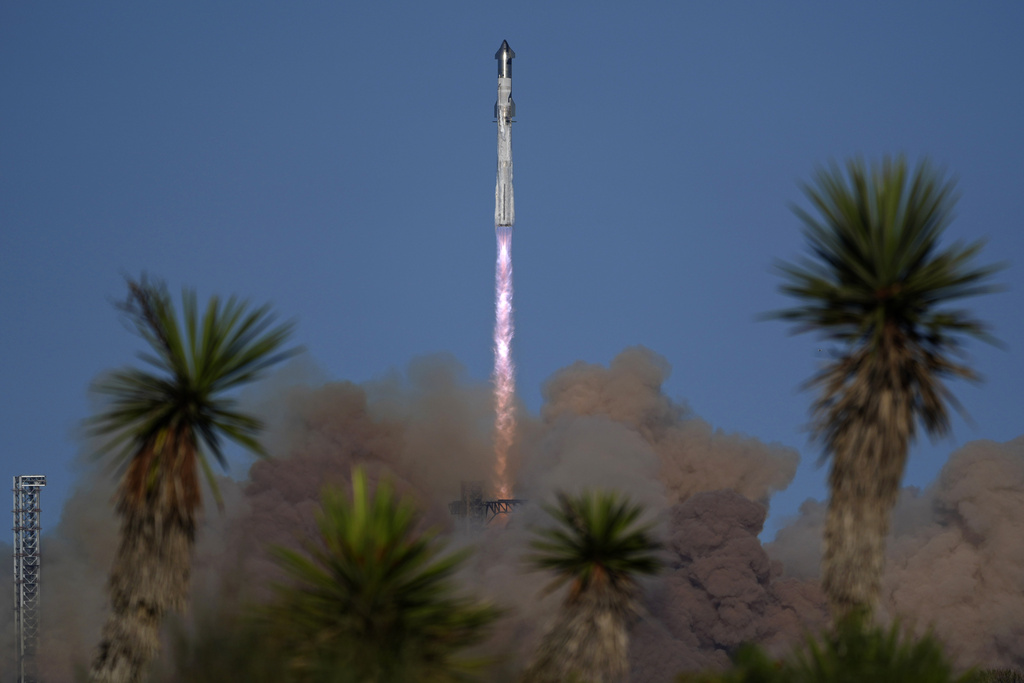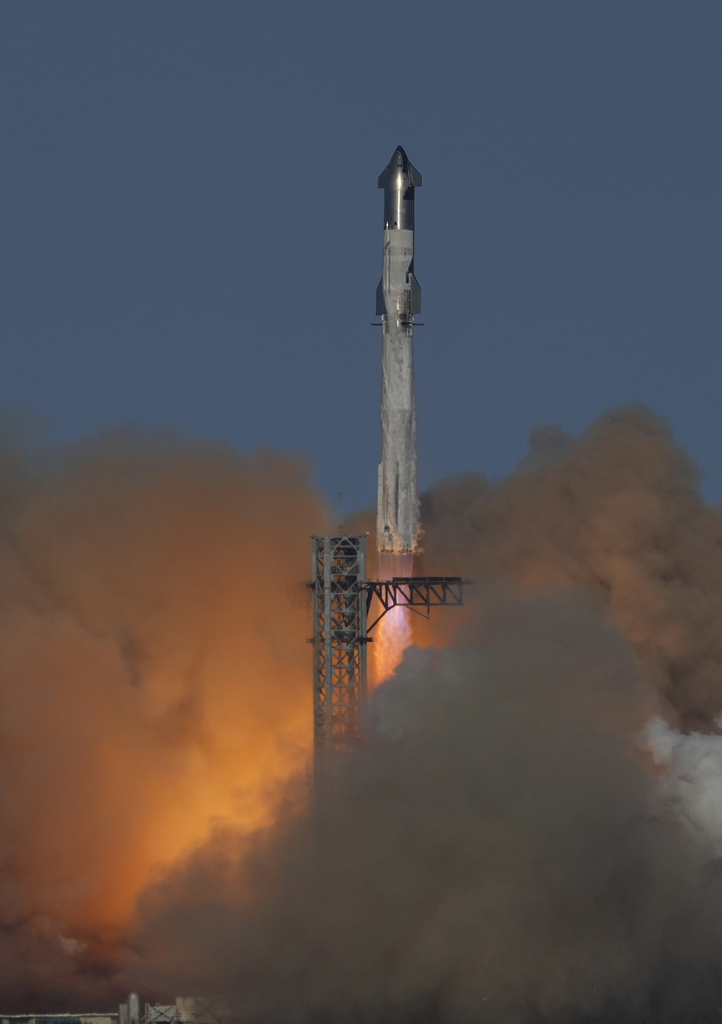SpaceX Launches Starship Rocket, Skips Booster Catch in Test \ Newslooks \ Washington DC \ Mary Sidiqi \ Evening Edition \ SpaceX launched its Starship rocket for the sixth time, marking progress in its development of reusable spaceflight technology. While the booster was intentionally splashed into the Gulf of Mexico, the spacecraft completed a near-global loop and splashed down in the Indian Ocean. The test included milestones like in-space engine ignition and thermal protection experiments, moving SpaceX closer to its moon and Mars ambitions.

SpaceX Starship’s Sixth Test Flight: Quick Looks
- Booster Splashdown: The booster splashed into the Gulf of Mexico after criteria for a catch were unmet.
- Orbital Journey: The spacecraft completed a near-global loop before splashing into the Indian Ocean.
- New Objectives: Included engine ignition in orbit and thermal protection testing without heat tiles.
- Daylight Liftoff: Late-afternoon launch ensured better visibility for descent observations.
- Reusability Goal: SpaceX aims to recycle the entire 400-foot Starship to lower costs and accelerate space exploration.
- NASA Collaboration: NASA has invested over $4 billion in Starship for future moon landings.
- Mars Vision: Elon Musk envisions Starship missions establishing a city on Mars.
Deep Look
Booster Catch Aborted for Splashdown
Unlike the previous test flight, SpaceX chose not to attempt catching the booster with its massive mechanical arms. According to spokesperson Dan Huot, certain criteria for initiating the catch were not met, prompting flight directors to forgo the attempt. While Huot did not specify the issues, the decision was made four minutes into the flight, and the booster splashed down in the Gulf three minutes later.
This planned splashdown marked a shift from October’s success in which the booster returned to the launch site. The data gathered from the splashdown is expected to inform future improvements to booster recovery and reusability.
Near-Orbital Journey
This was the second consecutive test in which the spacecraft successfully completed a near-global journey and managed a controlled landing, marking significant progress in SpaceX’s efforts to develop a fully reusable space vehicle.
Achievements in New Objectives
- In-Space Engine Ignition: For the first time, one of Starship’s engines was ignited in orbit, a critical capability for returning spacecraft to Earth.
- Thermal Protection Testing: Portions of the spacecraft were stripped of heat tiles to test alternative heat shield mechanisms and evaluate their durability.
- Daylight Visibility: The launch was scheduled for late afternoon to ensure optimal lighting for monitoring the spacecraft’s descent.
These incremental advancements bring SpaceX closer to realizing its goal of a fully operational, reusable spacecraft capable of interplanetary travel.
Reusability: The Endgame
The company envisions Starship as the backbone of future space missions, capable of carrying astronauts, cargo, and even entire habitats to the moon, Mars, and beyond. Fully recycling the 400-foot rocket would revolutionize the economics of space travel, opening up new possibilities for exploration and colonization.
NASA’s Investment and Lunar Ambitions
NASA has partnered with SpaceX as part of its Artemis program, awarding the company over $4 billion to use Starship for upcoming moon missions. The spacecraft’s immense size and power are expected to be critical for safely landing astronauts on the lunar surface and returning them to orbit.
Musk’s Vision for Mars
While NASA focuses on the moon, Elon Musk has set his sights on Mars. Musk envisions fleets of Starships ferrying people and supplies to the Red Planet to establish a self-sustaining city. This aligns with SpaceX’s broader mission to make humanity a multiplanetary species.
Tuesday’s test represents another step toward realizing this ambitious vision. Each launch contributes valuable data, helping SpaceX refine its designs and operations to meet the demands of deep-space travel.
High-Profile Attention
Past Challenges and Future Goals
The Starship program has seen its share of challenges, with the first three test flights ending in explosions. However, the last three tests have demonstrated marked improvement, with controlled descents and the successful execution of new objectives.
Looking ahead, SpaceX plans further upgrades for the next test flight, including additional refinements to the spacecraft’s heat shielding and recovery systems. Each iteration brings Starship closer to its ultimate goal: becoming the world’s first fully reusable, interplanetary rocket.
Conclusion
As SpaceX and NASA collaborate on lunar missions and Musk eyes Mars colonization, Starship’s development continues to shape the future of space travel. With each test flight, SpaceX edges closer to transforming interplanetary exploration from science fiction into reality.







